#Irish Fairy Folklore
Explore tagged Tumblr posts
Text
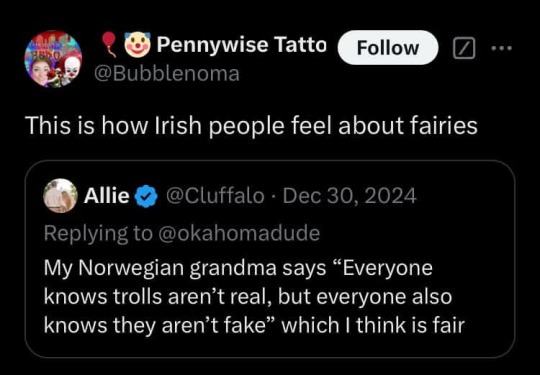
10K notes
·
View notes
Text
The Watchers (2024) – A Dark Dive into Irish Folklore and Trauma
Directed by Ishana Night Shyamalan in her feature debut, The Watchers explores Irish folklore through a lens of psychological horror, offering an atmospheric and introspective take on trauma, isolation, and identity. Starring Dakota Fanning as Mina, a 28-year-old artist, and Georgina Campbell as Ciara, the film takes place in the haunting forests of Western Ireland. Mina, after being stranded,…
#atmospheric horror#dakota fanning#debut film#fae mythology#fantasy horror#Georgina Campbell#horror and trauma#horror film analysis#horror movie review#Irish fairy folklore#Irish folklore#Ishana Night Shyamalan#psychological horror#supernatural horror#The Watchers 2024#trauma in horror
1 note
·
View note
Text
'The Watchers' Movie and 4K Review
The following review was written by Ultimate Rabbit correspondent, Tony Farinella. “The Watchers” is the feature film debut of Ishana Night Shyamalan, daughter of M. Night Shyamalan. M. Night Shyamalan is one of the most polarizing directors of the past twenty-five years. He caught lightning in a bottle early on in his career, and for the most part, he hasn’t been able to recapture that magic…
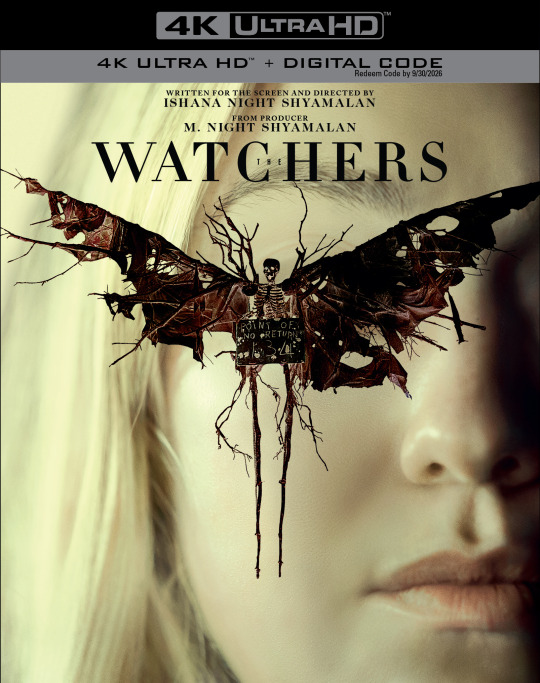
View On WordPress
#2024 Movies#4K#4K UHD#4K Ultra HD#A.M. Shine#Ainriochtan#Alistair Brammer#Belfast#Blinding Edge Pictures#Book To Film#Dakota Fanning#Georgina Campbell#Inimitable Pictures#Ireland#Irish Fairy Folklore#Ishana Night Shyamalan#John Lynch#M. Night Shyamalan#Mina#New Line Cinema#Oliver Finnegan#Olwen Fouere#The Burrows#The Coop#The Watchers#Tony Farinella#Warner Brothers#Warner Brothers Home Entertainment
0 notes
Text
The Good People (Na Daoine Maithe) | Official Trailer
The Good People (Na Daoine Maithe) is a lore-rich and choice-driven historical fantasy visual novel inspired by Irish mythology and Celtic folklore. Play as a tenant farmer from mid-19th century Ireland, whose path becomes inexplicably entwined in fairy affairs after getting robbed by the roadside and lured into the mythic and war-torn world of Tír na nÓg: A once unified land, now divided into the Seelie and Unseelie Courts. Will you escape and return home with your stolen belongings? Or does fate have something else in mind?
🍃 STEAM 🍂 ITCH.IO 🍃PATREON 🍂DISCORD 🍃
Eager to play? Certain route content is available NOW in early access on Steam and Itch.io! For more information, click below👇
Meet the Cast
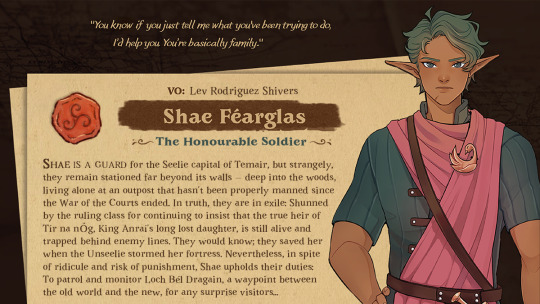
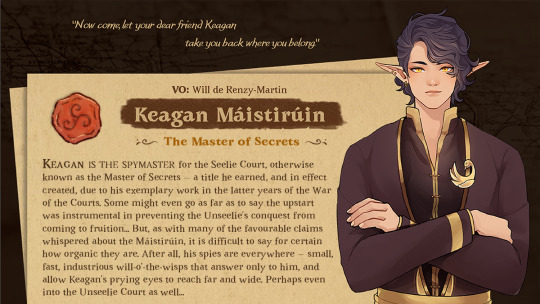
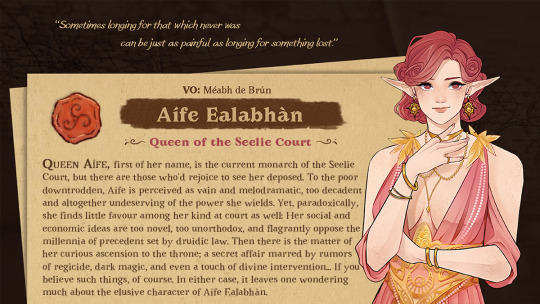
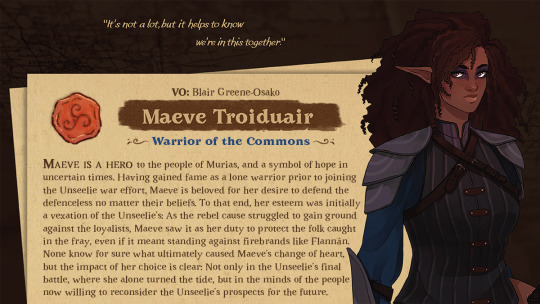
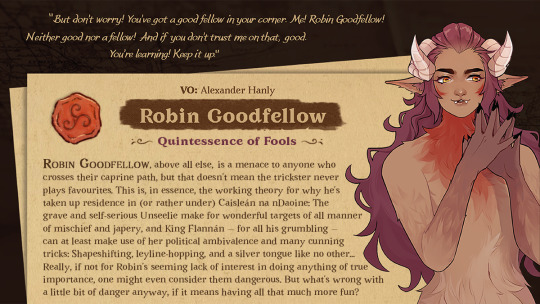
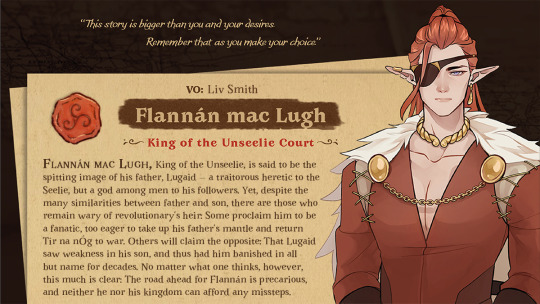
Facts & Questions: The Game
🍃 The Good People (Na Daoine Maithe) is a Kickstarter-funded project currently in development. Due to the scope of the story, we will be releasing it serially over several years to Steam and Itch.io, and discounting it while in early access. The earlier it's bought, the cheaper it will be overall, and you'll only need to buy the game once!
🍂 Not all routes are currently available! As of Nov. 1, 2024, you can play half of Shae and Maeve's routes; both approximately 50k words. If you're not sure about paying for an unfinished game, feel free to check out our free demo first. It consists of Vol. 1, Book of the Traveller (the pre-route content). Differences between the demo's Vol. 1 and the paid game's Vol. 1 are marginal following our August 1, 2024 re-release of the demo.
🍃 The Good People (Na Daoine Maithe) has a recommended reading order (Vol. 1, then 2, then 3, etc.), which will correspond to the release order of the routes. For more information on our reasoning behind this, click here.
🍂 Due to its setting, The Good People (Na Daoine Maithe) will occasionally feature instances of characters speaking in Gaeilge, i.e. the Irish language. All instances of Gaeilge are linked to an internal translation tool, which is voiced by Nigel McKeon, a Gaeilgeoir.
🍃 The main character is yours to shape. At minimum, you must choose a nickname, pronouns, and one of four default appearances, the last of which can be your own artwork (instructions are included in the game's files). You may also choose to discard the True Name…
🍂 All routes, both current and upcoming, will have both romantic and platonic choice options. If you're uninterested in romance, feel free to make friends instead! No matter the nature of your relationship, you will still be able to reach the good end. (Want to learn more? Refer to this post!)
🍃 Our cast consists of two men, two women, and two non-binary characters. All are romancable no matter the MC, but some characters are asexual or on the aromantic spectrum, which may impact aspects of their romances.
🍂 If you are a Mac user and are having issues launching the game via the Itch direct download, refer to this guide for troubleshooting before sending us an ask. We strongly recommend purchasing the game through Steam instead of Itch if you are a Mac user; it is the best way to avoid issues with launching the game.
🍃 NDM is very intentionally set just prior to the onset of the Great Famine, which is both thematically and textually relevant to the leftist, anti-imperialist story we're aiming to tell. If you would like more insight into this, refer to this post.
🐎 There are secrets to be found in this game, with more yet to come. Prepare yourself for a lot of horse related shenanigans. 🐎
Facts & Questions: The Company
🧵 Moirai Myths is a five-person company based out of Canada. The core devs/founders go by Clotho, Lachesis, and Atropos. All writing and programming are done by this collective, i.e. the Fates.
🪡 Moirai Myths has a two person in-house artist team consisting of Kazane, our Character/UI Designer, and Melinoe, our Environmental Designer. In addition to them, though, we have had a number of guest artists assist us with the creation of sprites, CGs, and an assortment of other materials. If you'd like to meet them, check out our about page on our website!
✂️ Moirai Myths stands with the people of Palestine 🇵🇸
Disclaimer: This description will be updated periodically. If you're reading this in a reblog, you may want to check our current pinned post for potential changes.
#the good people#na daoine maithe#visual novel#interactive fiction#otome#dating sim#friend sim#romance game#dating game#mythology#irish mythology#celtic folklore#fairies#seelie#unseelie#moirai myths#ndm#interactive story#interactive art
1K notes
·
View notes
Text



Illustrations from Irish Fairy Tales by Arthur Rackham (1920)
#arthur rackham#art#illustration#golden age of illustration#1920s#1920s fashion#vintage art#vintage illustration#vintage#british art#british artist#books#book illustration#irish folklore#fairy tales#fairy tale#fairytale art#classic art
598 notes
·
View notes
Text
So I was looking up myths and such and found a Cù-sìth, found in both Irish and Scottish folklore. The Cù-sìth is described as a large dog like creature that has shaggy green fur and is as large as a small cow.
And I thought: Thats Cujo!!!!

The Cù-sìth are known for taking dying souls to the afterlife.
#fun#:3#danny phantom#danny fenton#Cujo#dp cujo#scottish folklore#irish folklore#they are also called fairy dogs
1K notes
·
View notes
Text
Guarding your name from the fae in folklore
The idea of fae stealing names is quite recent (I’m a big fan of new, modern folklore, x, y), but the idea that you have to guard your name so no one could (supernaturally) us it against you, is definitely a widespread folk belief. However, I’ve never encountered an actual folktale that says the fae or fairies in particular could have power over you if they knew your name. I’ve been looking for one for a long time (and if you know one please let me know!) but so far I’ve only come up with one example. So let's take a look:
The power of names
Like I said, the power of names is an old belief that shows up all over the world. Sometimes it’s linked with naming ceremonies like baptism. Sometimes hiding the name from others (witches, djinns, etc.) is what will protect you, sometimes the name itself will protect you (like being named after a saint or in reverence of a deity or spirit). Edward Clodd published a huge essay in 1898 investigating how widespread this name guarding practice is and how it links to folklore. Which, while obvioulsy dated, certainly gives an impression of how deep this belief goes (Tom Tit Tot; an essay on savage philosophy in folk-tale, Clodd, E., 1898).
Not all folk beliefs show up in folktales though and protagonists who refuse to tell their name are not a staple of European folklore, whether it concerns fae or other entities. In “The Soul Cages”, collected by T. Crofton Croker it’s even quite the opposite, as the protagonist and a firendly merrow deliberately call each other by their full names (Jack Dogherty and Coomara). And for ages I wasn't able to find a story that actually incorporated the belief of guarding your name against fae, until I read that huge essay.
Hiding your name from the fairies
In his book, Clodd mentions a single folktale in which it is mentioned that the fae are trying to learn someone’s real name. Sadly he does not tell it in full, but since it is the only real example of this concept I’ve able to find so far, I will give the full quote:
While these sheets are passing through the press, my friend Mr. W. B. Yeats hands me a letter from an Irish correspondent, who tells of a fairyhaunted old woman living in King's County. Her tormentors, whom she calls the "Fairy Band of Shinrone," come from Tipperary. They pelt her with invisible missiles, hurl abuse at her, and rail against her family, both the dead and the living, until she is driven well-nigh mad. And all this spite is manifested because they cannot find out her name, for if they could learn that, she would be in their power. Sometimes sarcasm or chaff is employed, and a nickname is given her to entrap her into telling her real name, — all which she freely talks about, often with fits of laughter. But the fairies trouble her most at night, coming in through the wall over her bed-head, which is no laughing matter; and then, being a good Protestant, she recites chapters and verses from the Bible to charm them away. And although she has been thus plagued for years, she still holds her own against the "band of Shinrone." (Clodd, 1889, p. 83-84).
This story fits the concept of keeping your name away from malicious fairies so you cannot truly fall under their power perfectly. Sadly I haven’t been able to find this story in Yeats’ own folklore collection, but it fulfills my criteria even so.
What I have been able to find many examples of, however, is the reverse trope. Namely that knowing a fairy’s name will give you power over them. I thought this only showed up in Rumplestiltskin-type stories, but it seems a little more widespread than that. Which is very exciting to me, and merits its own post. So stay tuned.
#guard your name#fae#faeries#fairies#sources#laura babbles#folklore#irish folklore#I'm very pleased to have finally found a real example#although it seems a firsthand witness account#which is a more unusual way for this type of folklore to present itself#but no less interesting for a late 1800s text
173 notes
·
View notes
Text
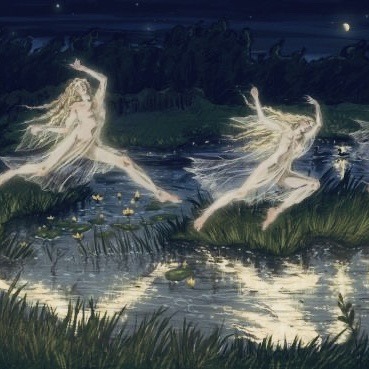
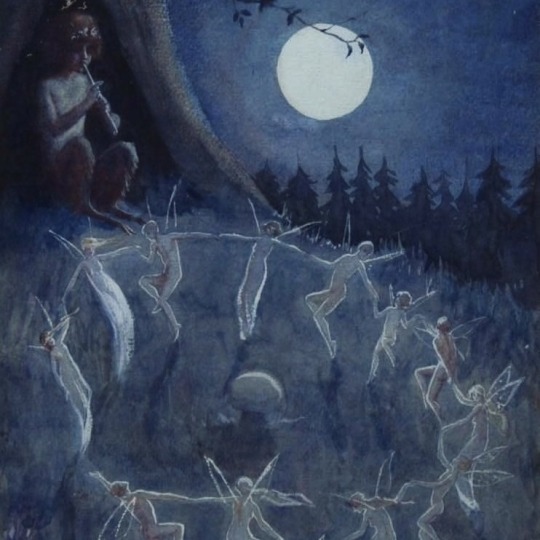
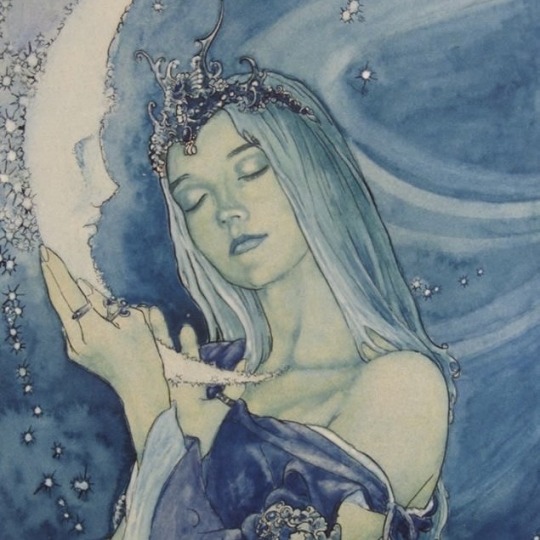
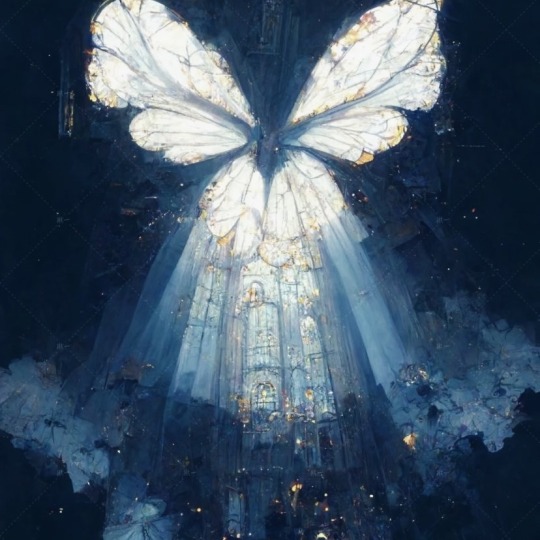
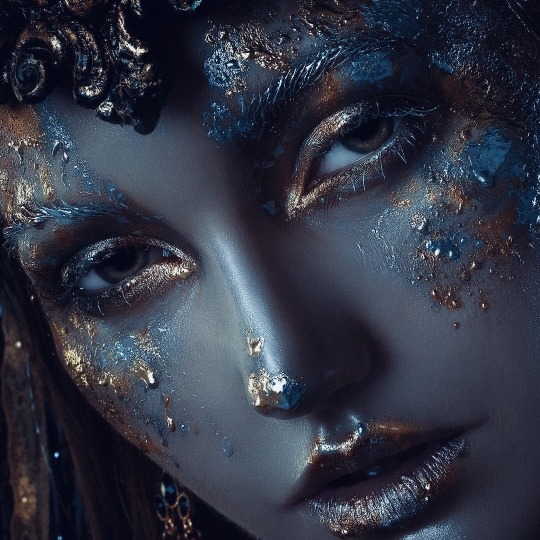

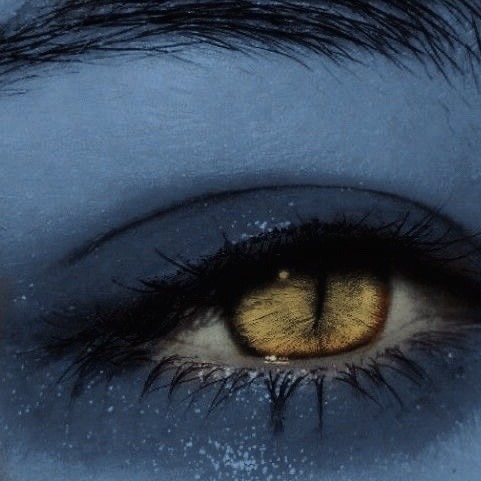

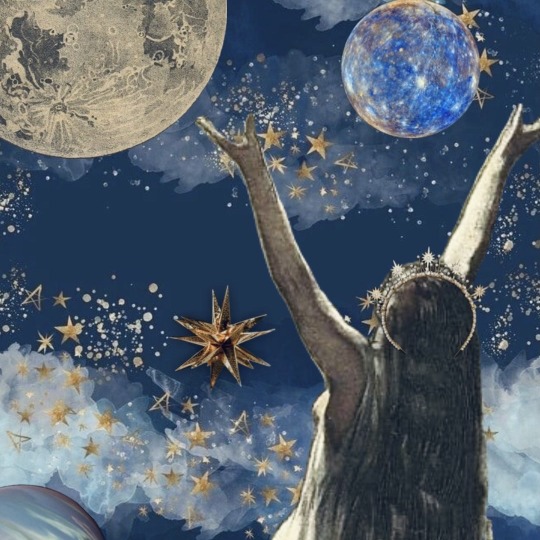
World Mythology: Fey, Faeries, and Fairfolk
“Faeries, come take me out of this dull world, for I would ride with you upon the wind, run on the top of the disheveled tide, and dance upon the mountains like a flame.”
- adapted from The Land of Heart's Desire by William Butler Yeats
#fairies#fairycore#fairy#fae#faecore#high fae#fey#fair folk#fairy tale#celtic folklore#celtic mythology#irish folklore#irish mythology#william butler yeats#acotar#acosf#the stolen heir#the cruel prince#tcp#tfota#the iron king#hoeab#rhapsodic#fairy dance#mythical creatures#sky aesthetic#blue aesthetic#moodboard#night court
549 notes
·
View notes
Text

The Riders of the Sidhe (detail) by John Duncan, 1911.
Sidhe or else the Tuatha Dé Danann, mystical or fairy people of the Irish mythology and folklore.
#john duncan#mythology#celtic#irish#sidhe#tuatha de danann#fairy people#painting#folklore#world traditions#mysticism#symbolism#art
222 notes
·
View notes
Text
Experiencing weird feelings regarding someone identifying as a w******, it certainly isn't my place to assume they aren't native american but it still strikes an uncomfortable chord in me as they seem to be unaware of cultural attitudes towards the spirit. Have there been community discussions surrounding this topic before? I'd really be curious to hear them, and to especially hear from native alterhumans from whose cultures this spirit belongs.
#alterhuman#alterhuman community#nonhuman#nonhuman community#therian#therian community#otherkin#otherkin community#discussion#this sort of links back to my ponderings on fairykin#like. is identifying as the modernized fairy ethical? especially if you dont take steps to research that spirit's original folkloric context#and simply go with the modern version that often erases the culture that spirit came from?#as an irish person who practices fairyfaith i really dont know how to feel about it. it makes me uncomfortable if i think about it too hard#but is anyone actually being hurt??? i really dont know. it completely disregards my culture entirely but the entire world has done that#already. idk. i also wonder about angels and demons and how christian alterhumans feel about them/how non-religious angels can exist#when angels are very religious beings#again i guess nobody is getting hurt? so its okay? but i do not incorporate angels/demons into my faith so someone who practices a religion#that involves angels/demons should really answer that one#its 4am sorry lots of thoughts. ultimately! i dont know!!! i am just trying to learn more
60 notes
·
View notes
Text
Why do Fae in fairytales always ask for a First Born Child? Like thats so worthless. What are you even going to do with a human baby. They’re literally useless.
You want me to undo a curse? That’ll be 20 bucks, cash only. Bless you with some magical gift? Get me a Gucci Handbag and you’ve got a deal.
You could be getting so much more out of this guys c’mon.
#fae#thoughts#shower thoughts#meme#fae folk#mythology#folklore#fairy#fairytales#history#irish mythology#celtic mythology#folklore memes#twst#twisted wonderland
21 notes
·
View notes
Text
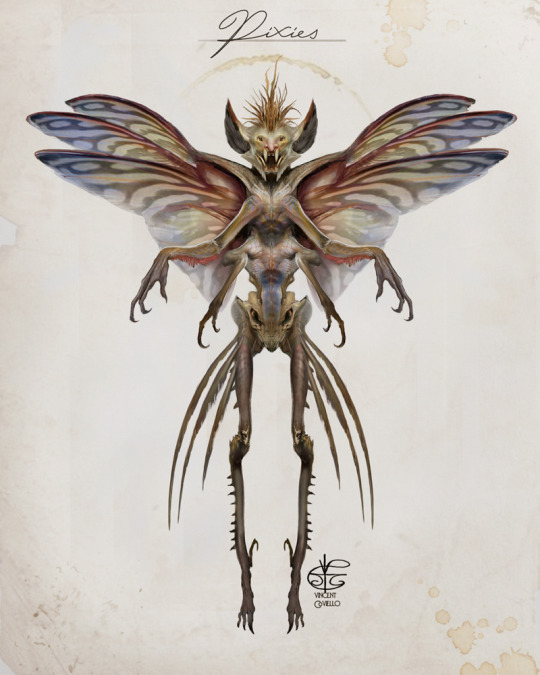
Taking a step away from dragons for this post and into the land of fairies.
The term Pixie catorgorizes a large swath of small, typically lowland, fairy folk. Their appearances are as vast as the number of seeming species. If they can be classified in species at all. Due to their highly dimorphic nature, even amongst family groups, it is believed that the Pixie is a shift shaper of sorts, augmenting different parts of their anatomy at will or when necessary due to environmental factors. The only unified quality shared amongst pixies is their small stature and proclivity towards mischief.
Of the countless fairy races, Pixies are one of the most temperamental and in some cases despised. While most fairy folk will avoid humans and other fairy beings in general the Pixie is quite the opposite. Gnomes and Leprechauns are particularly not fond of them. With Gnomes having had territorial wars them. It’s also not unheard of to find Pixies being used as court jesters or even pets for “higher” fairy folk.
#pixies#fairy#fairies#conceptart#creaturedesign#bestiary#artistoninstagram#monstergram#magicthegathering#dungeonsanddragons#fay#faeries#pixie#digitalart#celtic#irish folklore#mythological creature#fantasy art#dark fantasy
358 notes
·
View notes
Text



I don’t know why I’ve avoided posting my thesis work on here for over a year now. These characters mean the world to me, and sharing my love for them with people who are willing to indulge in their magical little universe is a lovely bonus, so share it I must~ This is the book jacket, inspired by the gorgeous and intricately detailed art from irish illuminated manuscripts. I’ll be posting it in parts, but you can see the whole thing on my portfolio site. Here’s a little description to kick things off:
“Do you ever wonder what goes on in the Faerie realm that seems to exist all around us, and yet right beyond the veil of our perception? So does Aiva Abara, a 19 year old aspiring nature conservationist from kilkenny Ireland. This journal documents her experiences that came from becoming acquainted with the Faerie who dwell in the forest around her home. More specifically the Crann Fae: a race of tree Fae who serve as guardians of the natural world, and who are just as mysterious and majestic as the trees they are born from.”
(Next spread >>>)
#fae#fantasy art#irish folklore#fairies#illustration#my art#Aiden & Aiva#faeries#froggy goons#THE CRANN OF THE FAE
346 notes
·
View notes
Text
What did the Nac Mac Feegle steal when they lived in Fairyland? (Aside from the more accurate answer of “pretty much everything”).
Sidhe-p!
*I get that the sidhe are Irish and the Feegles are closer to Scottish, but I’m going to excuse this because the Feegles could go anywhere by crawstepping.
#discworld#gnu terry pratchett#thought(s) from yours truly#tiffany aching#nac mac feegle#feegle#fairy#irish#mythology#folklore#joke
16 notes
·
View notes
Text

The countdown continues... Are you ready for your next adventure? 🐦⬛⚔️
🍃 Wishlist on Steam 🍂 Follow on Itch
#the good people#na daoine maithe#visual novel#otome#dating sim#interactive fiction#friend sim#amare#indie game#seelie#unseelie#fairy#irish mythology#celtic folklore
56 notes
·
View notes
Text
TIL the word "Seelie" (as in i.e. members of the Aés Síde who show no malice toward humans) comes from the Old English "sǣl", and Proto-Germanic "sālīg" (“blissful, happy”). The English word "silly" also comes from that root.
So the Aés Síde are really divided into the silly court and the unsilly court
204 notes
·
View notes